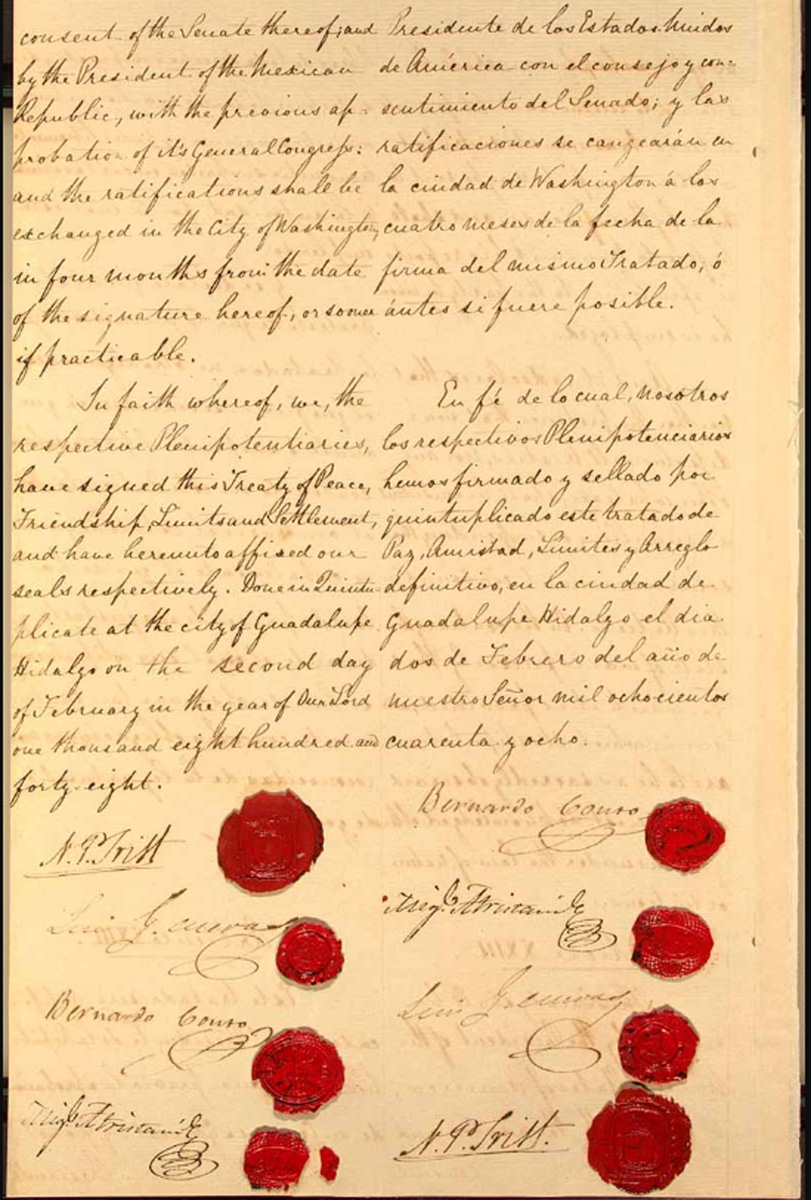Between 1846 and 1848, the United States was at war with Mexico, fighting to claim land and territory in the Southwest. The United States quickly started to take over different parts of Mexico including what was then known as Santa Fe de Nuevo Mexico and other parts of the Southwest, effectively defeating Mexico and claiming the land.
The Treaty of Guadalupe Hidalgo was signed in 1848 effectively ending the war with Mexico and giving over 500,000 square miles of land in California, Nevada, Utah, New Mexico, Colorado, and Wyoming to the United States. There were many cultural and identity considerations that came along with this change when many people found the border had suddenly crossed them.
This treaty forced Native Americans onto Pueblo Reservations. This change also dissolved land grants that had been established by Spanish settlers and Native Americans. When the treaty was agreed upon, a clause was in place to protect the land grants, however, it was stricken from the treaty when it was signed.
This treaty is thought to have disenfranchised many Native Americans, Mexicans, and Spaniards, by stripping them of their land and identity, creating a new identity for them as Americans, forcing them to the bottom of the pecking order in the never-ending work to establish a life and future for their families.
The Treaty of Guadalupe Hidalgo was signed 175 years ago and in Feb., the National Archives announced they would be lending four pages of this treaty to History Colorado Center in their Borderlands of the Southwest Exhibit in Denver, Colorado to display until May 22. For more information about this exhibit and to purchase tickets, visit: https://www.historycolorado.org/exhibit/borderlands-southern-colorado-history-colorado-center



